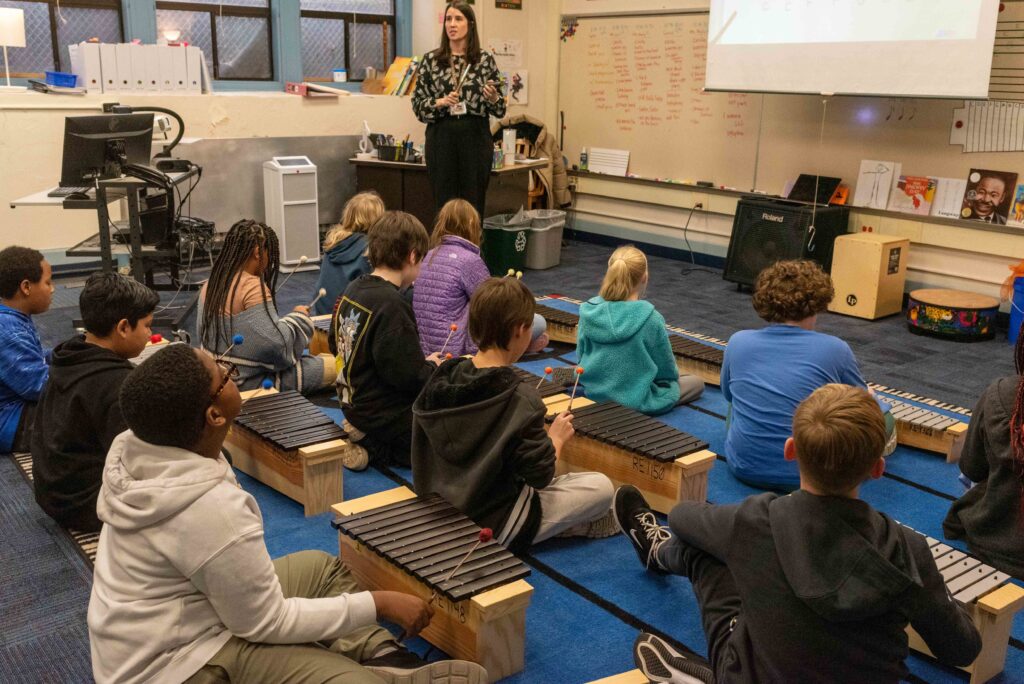According to
state data
, about 24% — roughly one in four — of Portland Public Schools students lives in a family that receives government anti-poverty aid or is homeless, is from a migrant family or lives in foster care.
But when the state crunches how much money to allot to school districts, the entirely different
formula
it uses pegs just 9% of the district’s students as high-poverty.
That makes the district eligible for a sizable per-pupil funding boost only for that smaller subset of students.
Run the numbers for many of the state’s districts, large and small, and the story is the same. Salem-Keizer, on its
state-issued annual report card
, has 41% of students experiencing poverty. The different metric used to calculate the state funding formula pegs that at 18%. In Hillsboro, the difference is 28% and 8%; in Gresham-Barlow, it’s 38% and 10%.
For districts, being funded for a lower percentage of students in poverty means — in theory — a difference of millions of dollars.
State officials acknowledge that the higher figure, known as “
direct certification
” because it matches individual students with the food stamp benefits or other services they receive, more precisely captures the number of students in each public school who experience poverty.
The state
switched
to that method of counting students in poverty for the purpose of publicly reporting academic outcomes in late 2022. By that point, virtually every school district in the state had begun offering
free meals to all students
regardless of their income, making the previous use of free or reduced-price lunch rates as a poverty indicator obsolete.
But
state statute
requires that the formula used to calculate the extra money meted out to districts who educate a high concentration of low-income students rely on
child poverty estimates the U.S. Census Bureau generates each year
.
Changing that would require both direction and action from lawmakers, who have made no serious moves to do so this legislative session.
On the contrary, on Wednesday, the $11.4 billion state schools fund is due to move out of a
key budget subcommittee
, with the current poverty formula intact.
One reason, said Mike Wiltfong, the Oregon Department of Education’s longtime director of school finance, is that adjusting the formula would mean either that the state would need to find more money for the public school system — in a year when
revenue is tight
and the
$11.4 billion
that Gov. Tina Kotek has proposed for the state schools fund is already an 11% increase over the current funding level — or that existing funds would be redistributed, a la Robin Hood.
“In essence, you’re thinning the soup,” Wiltfong said.
In other words: If the state were to give an extra $3,000 or so per student to the districts that educate all 177,000 or so children on food stamps or other forms of anti-poverty aid or who are homeless, in foster care or from migrant families, there would be significantly less money per student for the roughly 66% of Oregon schoolchildren who aren’t poor.
(Thinning the soup, as Wiltfong puts it, could also threaten federal special education funding, since states must show each year that they are
holding their own spending on special education at least steady
, in order to keep drawing down federal matching dollars.)
And as John Rexford, who chairs the state’s Quality Education Commission, has
previously noted,
historically, policymakers have
quickly abandoned
attempts to differentiate the state’s funding formula in ways that leave whiter and wealthier school districts at a comparative disadvantage.
Still,
national outlets
have been scathing about the design of Oregon’s funding system when it comes to its neediest students, who graduate high school at far lower levels and are far more likely to miss big chunks of the school year than their peers from more financially stable homes.
A 2024
report
by the nonprofit Education Law Center ranked Oregon dead last among 48 states for its regressive funding system’s impact on high poverty schools. On average, the report found, high-poverty districts — like those in east Multnomah County or in Malheur County – receive 23% less per pupil than high-income district, a difference of about $3,800 per student.
“I think it is fair to say that there is more and more evidence that we need to do something about poverty. If you look at national research, Oregon doesn’t score well when it comes to the poverty piece and the equity that we have around that,” Wiltfong said.
A state-commissioned
report
by the nonpartisan American Institutes of Research released earlier this year underlined that same point. In that case, researchers
said
that the state needed to spend more money across the board to achieve better outcomes for students, but that it should super-size its spending in high poverty districts, along with those that serve large numbers of students learning to speak English.
Complicating matters: Oregon’s formula only pays a school district extra for the number of students in poverty whose families reside in that district, in order to avoid inflating numbers for districts that sponsor virtual charter schools attended by students who live elsewhere in the state.
One outgrowth of that approach is to ratchet down the poverty adjustment for school districts in which a hefty share of students don’t attend the local public schools but rather, choose another option such as private school or homeschooling. The state assumes those who opt for private school or a similar option have the same poverty rate as those who enroll in the local public schools – a dubious assumption that delivers measurably less help to some high poverty districts.
At the start of the legislative session, State Sen. Fred Girod, a Republican from Stayton, introduced
a bill
that would have increased the extra funding set aside for students experiencing poverty. The bill died in committee.
Wiltfong said he was not aware of other such efforts, and that change would need to start at the Capitol.
“Is there a different way we could do this? Absolutely,” Wiltfong said. “However, that would take a change in legislation. I can’t do something that the statute doesn’t permit me to do.”
— Julia Silverman covers K-12 education for The Oregonian/OregonLive. Reach her via email at jsilverman@oregonian.com.





More Stories
Oregon’s school funding formula undercounts poverty, denying some districts millions. Lawmakers are poised to approve it anyway
Oregon’s school funding formula undercounts poverty, denying some districts millions. Lawmakers are poised to approve it anyway
Oregon’s school funding formula undercounts poverty, denying some districts millions. Lawmakers are poised to approve it anyway